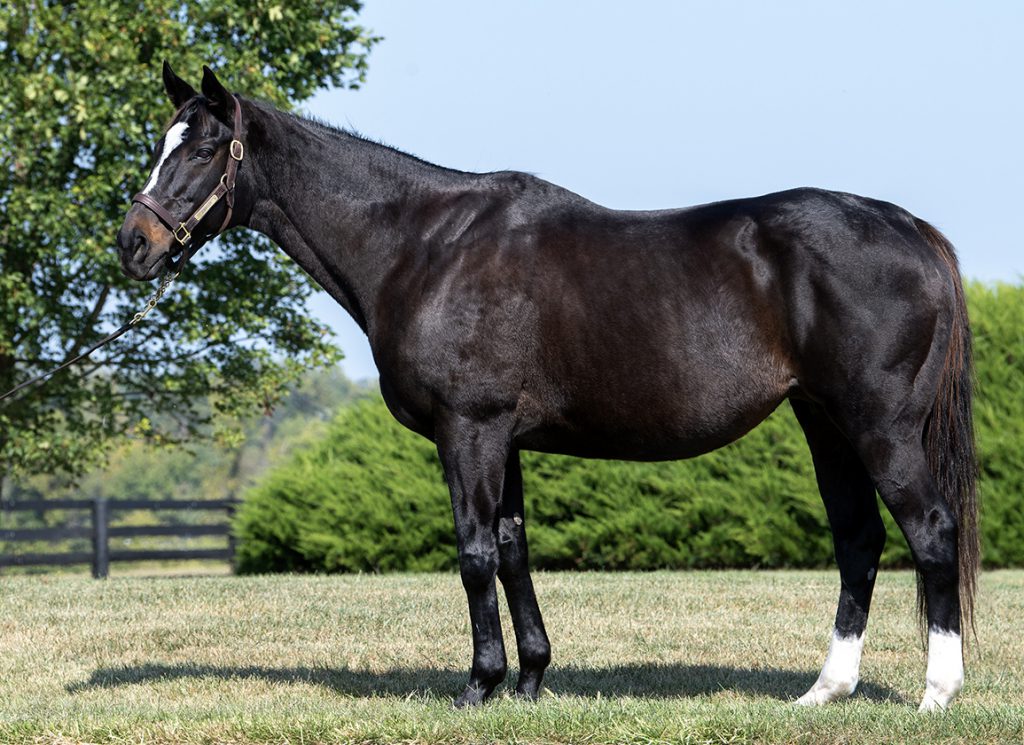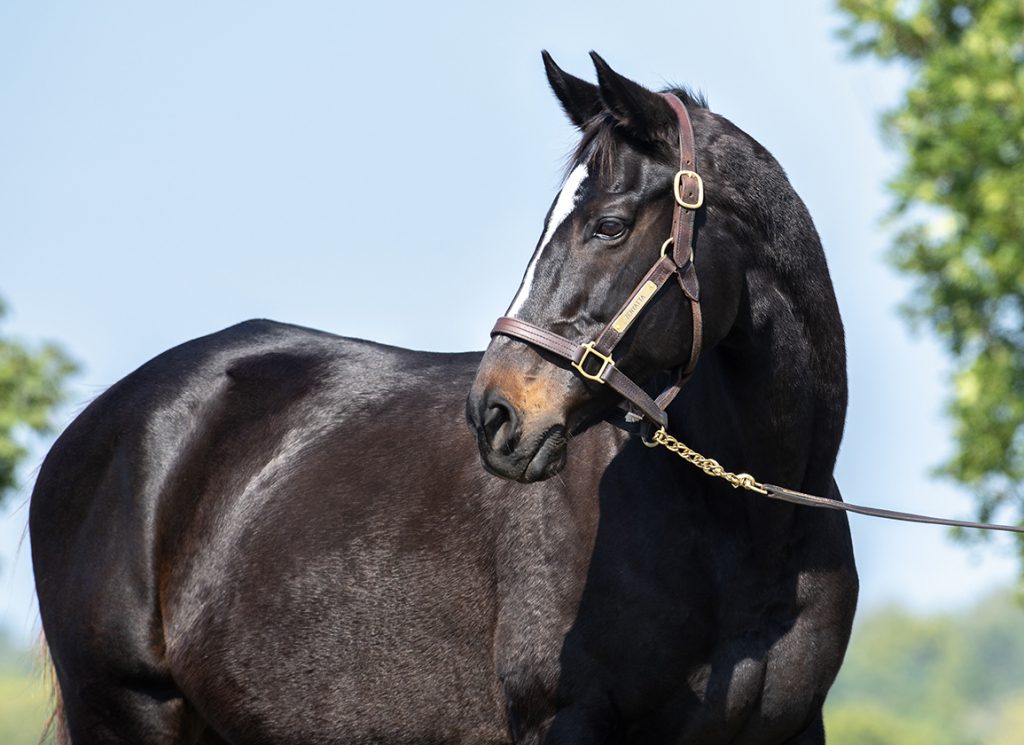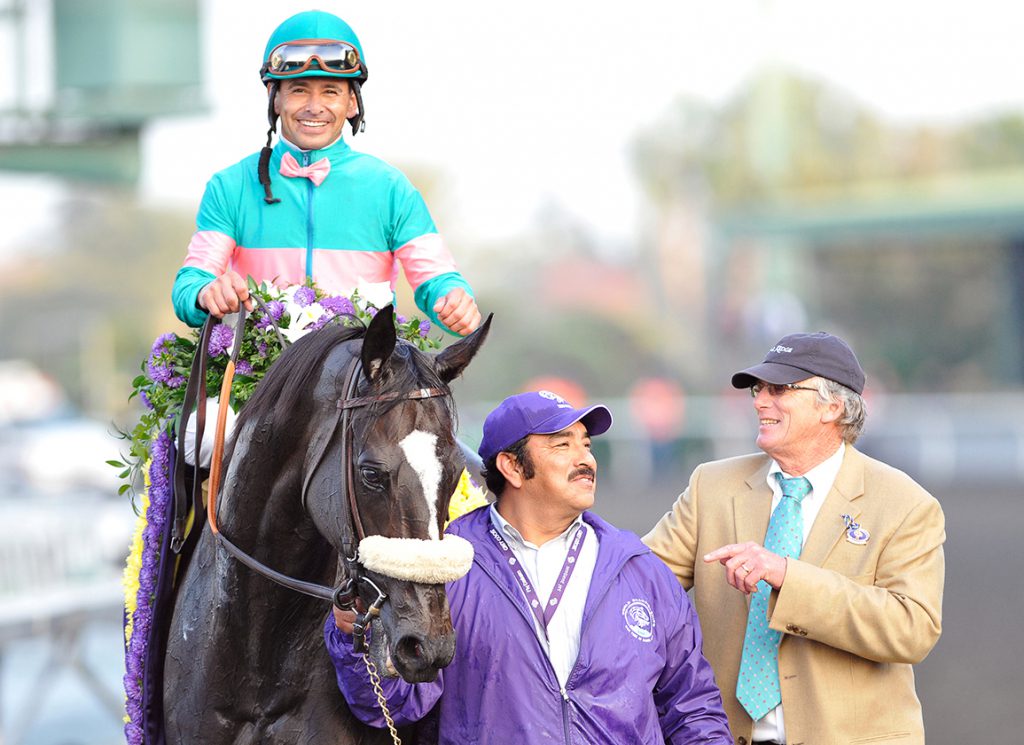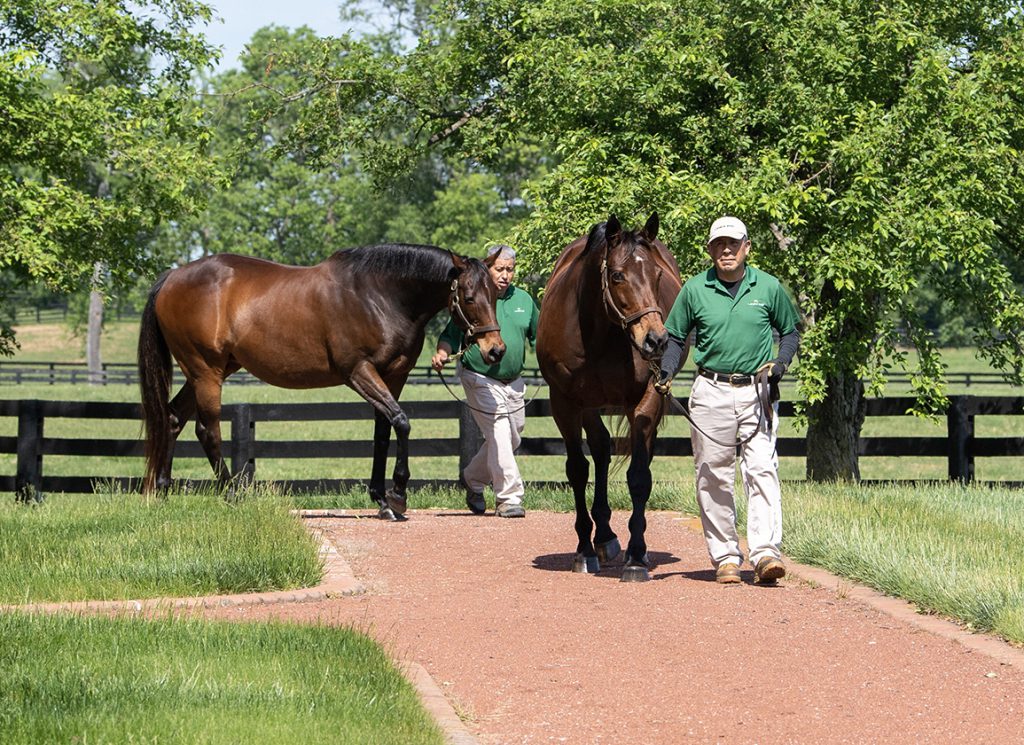Thousands upon thousands–likely hundreds of thousands–of words have been written about the legendary Zenyatta, who captured the heart and soul of racing during her time on the racetrack and remains just as beloved today, 13 years after her retirement. Winter Quarter Farm's Don Robinson, who foaled her, was kind enough to share his memories of her formative years with TDN.
“Zenyatta was the ultimate,” said Robinson. “I can't say enough superlatives about her. I could speak endlessly about her.
“The real satisfaction is I delivered her mother, too. I had three generations, so it's kind of the breeder's ultimate reward. Their owner–Eric Kronfeld, who has passed away–over the years we became very fast friends. We formed such a very close human relationship that became obviously closer and closer over Zenyatta's career. He was a great friend. I still miss him.
“My family has been three or four generations in the Thoroughbred business. I don't think we ever could have thought we'd have the good fortune to be such an integral part of such a magnificent horse like Zenyatta. I feel she's the best horse of our lifetimes. I'll leave that to others to decide, but no matter who I run into, people tell me that they feel she's the best horse they've ever heard of or seen. It's heartwarming; it's rewarding; it's all the superlatives.
“The three generations of her family that I had started with For the Flag [Zenyatta's granddam], whom Eric very carefully bred to the Roberto line to get Vertigineux [Zenyatta's dam]. He was so taken with Street Cry that he bred Vertigineux to her and got Zenyatta. I never knew she'd be that kind of horse; you just never know.
“I'd raised all of Vertigineux's foals. It was a really neat family. Balance [Zenyatta's half-sister by Thunder Gulch] was totally precocious. She felt like a quick 2-year-old, so fast and so hot. She was quite remarkable. She'd get away from you. Zenyatta had much more cool; she was a bit more level headed.
“Of course, everyone knows the infamous story about Zenyatta at the [2005 Keeneland September] sale: Street Cry wasn't particularly well received and she was immature. She had a Street Cry hind leg; there was no precocity to her at all.
“There were really just two people interested in her at all and I think David Ingordo had a little bit of a leg up because Balance was really impressive and he was either in the same barn or next to the barn of Balance.
“Zenyatta looked like a project to many people. She didn't grab them. We thought more of her, but we got her on the ground and raised her well, I hope.
“But the best thing that ever happened was that David purchased her for Jerry Moss, who was one of the more patient owners. He and [trainer] John Shirreffs just really had a sense of Thoroughbreds and giving them time. What a great team. They left the horses alone if they needed it and gave them the time they needed to mature.
“I think that time was really essential for Zenyatta. So much of the key is giving them the time they need.
“My friend Eric Kronfeld said, 'I never could have done that; I would been impatient.' Most people would, but she was in the right hands.”
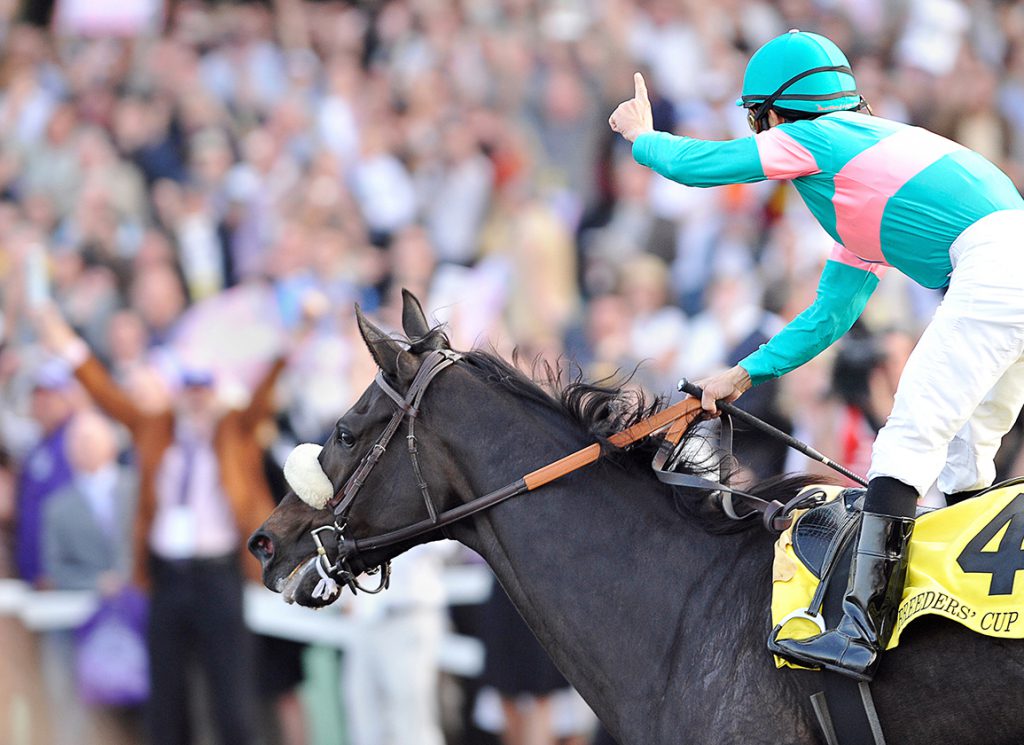
Zenyatta and Mike Smith celebrate after the 2009 Classic with trainer John Shirreffs in the background | Sarah Andrew
Robinson also talked about Zenyatta's three Breeders' Cup appearances. She won the 2008 Ladies' Classic, briefly rebranded as that name from the Distaff; the 2009 Classic against the boys as the only filly or mare to win the Breeders' Cup's signature race; and then closed out her career with her only official loss in 20 starts in the 2010 Classic.
“My favorite race, what I thought was her crown,” said Robinson, “was her Distaff. She went off–for her–at a fairly long price and was discounted some because she had remained in California, except for the Apple Blossom in Arkansas. She just annihilated the field. That race was, 'Oh my goodness; she's the real deal.' She just performed like no other horse. She was pretty unusual. And then she kept improving.
“When I went to her Distaff, I had not seen Zenyatta since I'd raised her. I was kind of leaning around the wall in the saddling paddock when she made a pass by. She went past me, stopped, and turned her head completely around. She took her time, looked straight at me. There was no question she sensed me. It was like she was saying, 'Where have you been?' She had such a presence. It really gave me the chills. She singled me out, no question. Isn't that remarkable? She was just an incredibly unusual horse. She was so intelligent.
“Everyone loves the Classic she won, but I think her best race was the one at Churchill she lost in her last start. There was silence afterward. But I came away thinking, 'That was the most sensational race.' She was absolutely out of contact with the field. Floundering. For her to get up and just miss that wire by a head…. I've never seen a horse on dirt make up that kind of ground. It was the best.
“Sometimes I go to YouTube and look up Zenyatta. All her starts are there. You almost end up on the floor, it's so sensational to see her break patiently, get up, and measure the wire. You end up breathless.
“I'm 75 years old and the experience with her has been extraordinary.
“Now, years later, I still sort of pinch myself to think I had a horse like that on this land. To have raised her and to have that sort of extraordinary performance and career and presence and just everything… I can't imagine a greater experience in this industry, but hope springs eternal.”
Zenyatta (2004 dark bay or brown mare, Street Cry {Ire}–Vertigineux, by Kris S.)
Lifetime record: Horse of the Year, Ch. older mare (three times), MGISW, 20-19-1-0, $7,304,580
Breeders' Cup connections: B-Maverick Production, Limited (KY); O-Mr. and Mrs. Jerome S. Moss; T-John Shirreffs; J-Mike Smith.
Current location: Lane's End Farm, Versailles, Ky.
Breeders' Cup: Celebrating 40 Years of the Breeders' Cup from Thoroughbred Daily News on Vimeo.
The post Catching Up with Breeders’ Cup’s 2008 Ladies’ Classic and 2009 Classic Winner Zenyatta appeared first on TDN | Thoroughbred Daily News | Horse Racing News, Results and Video | Thoroughbred Breeding and Auctions.
